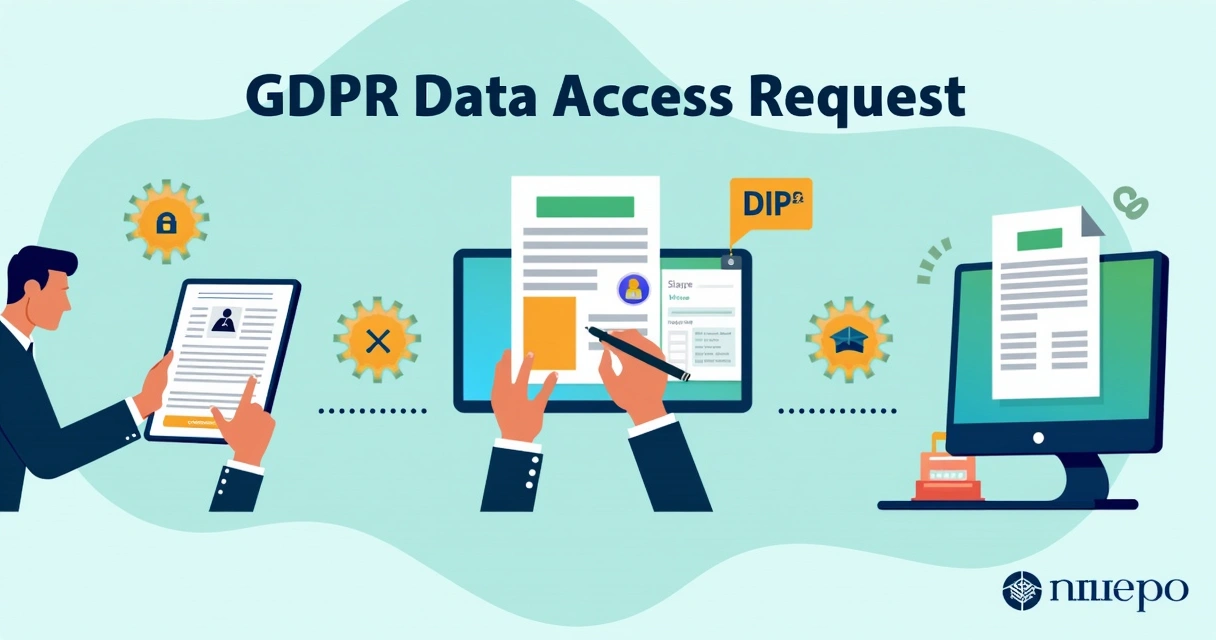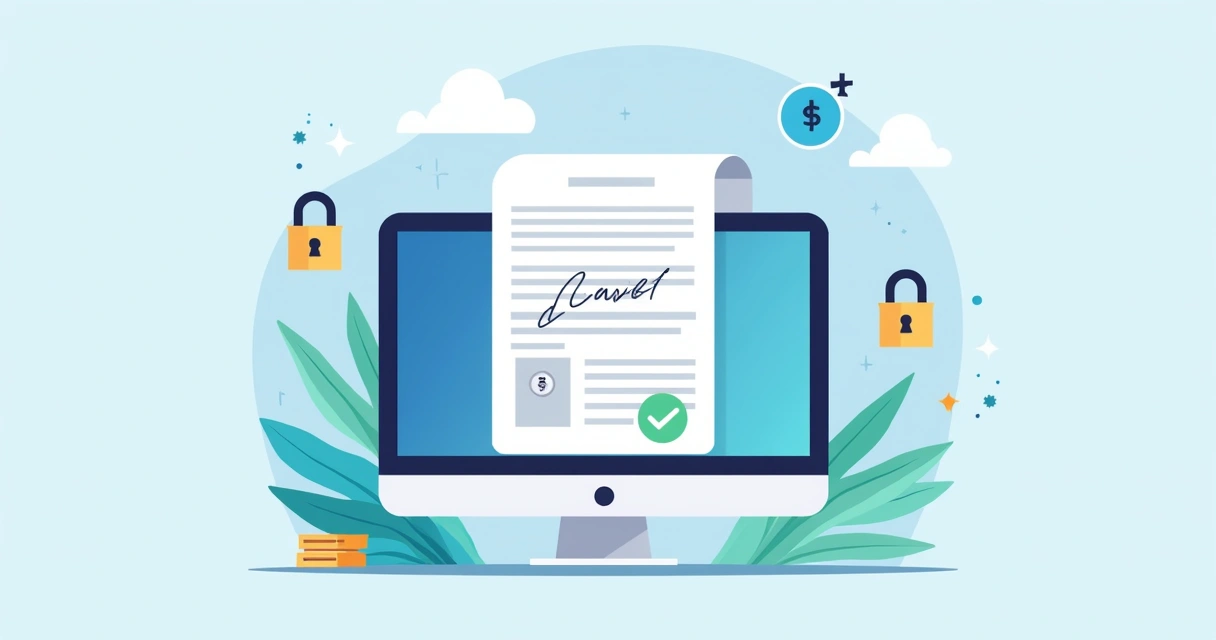If you work with customer data anywhere in Ireland or the EU, you know that GDPR data access requests are becoming more frequent every year. Individuals want to take control of their data and exercise their rights. People ask for copies of their information, or even to have their records fixed or deleted. These requests must be handled quickly, carefully, and, most of all, securely.
But how do you actually confirm the identity of the requester? And can you collect legally binding e-signatures online that meet the requirements of GDPR, without creating headaches for your team?
You might be surprised at how painless this process can be with the right e-signature tools. Let me walk you through it.
Why you need e-signatures for GDPR data access requests
GDPR requires that you “verify the identity of the data subject” before you disclose or take action on any personal data. This isn’t just a checkbox exercise. If you hand out sensitive information to the wrong person, even accidentally, your business faces big legal and reputational risks. So, you need a method that’s quick for both parties, but crystal clear in proving who signed.
A digital signature can be more legally robust than pen and paper, if you get it right.
That’s why e-signatures are smart for GDPR requests. They prove intent, establish identity, and create a tamper-evident trail. But not all platforms are equal. Some fall short on security or audit trails. Others charge steep fees or require contracts you just don’t need.
This is an area where CloudSign.ie offers a refreshing change, especially compared with more cumbersome (and expensive) global platforms. More on that in a minute.
The legal basics
It’s not just about practicality. Under the European Data Protection Board guidance on respecting individuals' rights, you must communicate in clear language and “facilitate the exercise of their rights electronically.” That means, providing an online form and simple digital routes are directly supported by EU regulators themselves.
You don’t just need signatures for access requests, by the way. Proof matters for corrections, restrictions, and erasure requests too.
For a deeper look at legal requirements for e-signatures (including Ireland’s specific laws, which also apply to companies working with Irish customers), try the detailed guide to electronic signature laws in Ireland.
Step-by-step: how to collect e-signatures for GDPR requests
Let’s break this into a simple process:
- Set up a secure request form. Start by offering an online form where people can make access requests. If you want to be extra helpful, let users specify what info they want and how they'd like to receive it. Your form should include mandatory contact details and explain what proof of identity you’ll need. Guidance from EDPB recommends this for both clarity and security.
- Decide how to verify identity. There’s no strict rule in GDPR about exactly which identification you have to use, but the riskier the data, the stronger the check should be. Most organizations combine an ID document with a signature for maximum assurance. Sometimes, just an e-signature is enough, especially when returning info to a known user’s email or account.
- Prepare your response documents. This is where a secure e-signature platform really shines. You’ll send back a document summarizing the request, what action you’re going to take, and ask the requester to sign it before you release any data. This keeps everything on record and protects you if questions are raised later.
- Request signature via an e-signature platform. Upload your response document to CloudSign.ie. Assign the recipient’s name and email. Set required fields (signature, date, maybe even initials). The system will notify the person and guide them through signing on any device, wherever they are.
- Receive and audit the signature. When your customer signs, you get notified. Critical: the platform creates an audit trail showing when, where, and who signed. Many older systems struggle with this. CloudSign.ie makes it easy to export detailed logs if ever inspected by authorities.
- Release the data (securely!). Once you’ve checked that the signature and ID match, release the requested info using the secure channel agreed on. Keep every signed record safe for proof.
Common mistakes and how to avoid them
A lot can go wrong with manual or email-based approaches. Here are a few things I still see businesses trip up on:
- Sending documents as plain email attachments, without any identity confirmation (risk: massive data breach).
- Accepting photographs of handwritten signatures, which are easy to fake and hard to prove.
- Failing to store e-signature proof or missing the full audit trail.
- Letting access requests become bottlenecks because the process is too slow, or requiring the requester to print/scan/upload.
You don’t have to overcomplicate. You just have to be sure!
What makes a trustworthy e-signature platform?
Let’s get practical. There are hundreds of e-signature services. Many look impressive at first glance, but only a handful really nail the needs of Irish and European GDPR workflows.
- Security-first design: Encryption everywhere, full compliance with European law, and robust authentication checks.
- Audit trail: You need to see (and show) not just that someone signed, but when, how, and with what device or IP.
- Flexibility: Ability to collect other data (ID numbers, checkboxes) plus signatures in one package.
- No hidden cost traps: GDPR requests often involve many small interactions. Platforms with high per-document fees punish you for following the rules.
CloudSign.ie focuses on these needs specifically for Irish organizations. There’s a genuinely free-for-life plan for smaller teams and individuals, with a simple upgrade path once your volume grows. You aren’t forced into expensive contracts, and the workflow is clear even for non-technical staff.
Compared to some larger providers (who sometimes hide costs or make you jump through hoops for basic features), CloudSign.ie is fast and open about what you get.

Tips for a smooth and compliant e-signature process
- Be transparent about why the signature is needed. It reassures users that you take their privacy seriously.
- Automate reminders so requests don’t get lost in inboxes.
- Keep every step digital. No prints, no scans, no delays.
- Test the user experience (ideally yourself or with friends), if it’s confusing or fiddly, you’ll get questions or complaints.
- Stay up to date. Read the latest legal facts about e-signatures in Ireland for changes and new requirements.

Using e-signatures for GDPR requests with CloudSign.ie
Let’s be honest: some big-name e-signature services are excellent at international corporate workflows, but they can be overkill for an Irish business needing to keep things secure, clear, but affordable. CloudSign.ie is built for people who actually have to handle these requests directly, whether you’re a team of one or one hundred.
If you haven’t used a digital signature tool before, there’s an easy beginner’s guide to electronic signatures or you can try a full free e-signature step-by-step guide. Both show, in simple terms, how you can go from paper and chaos to digital and trackable.
Start simple. Build trust. Protect everyone’s data, including yours.
There’s no need to outsource compliance to outsiders or push users through outdated manual steps. Collecting GDPR data access e-signatures can truly be as easy as sending an email and checking a box.
Conclusion
Collecting e-signatures for GDPR data access requests isn’t just about ticking boxes. It’s about respecting privacy and proving you’re serious about security. With a service like CloudSign.ie, you can make this process easy for your users and safe for your organization. Give your team peace of mind, show your customers respect, and save your business from wasted time or risk. Ready to experience digital signatures the way they should be? Try CloudSign.ie today, move your compliance into the future, easily.
Frequently asked questions
What is an e-signature for GDPR requests?
An e-signature for GDPR requests is a digital way for someone to agree or confirm their identity when exercising their data rights under GDPR. Instead of signing a paper, the individual signs electronically using a certified platform. These signatures prove who the person is and what they agreed to, creating a clear record for both sides.
How to collect e-signatures for data access?
To collect e-signatures for data access, provide an online form or secure digital document outlining the request. Send this to the requesting person using a platform like CloudSign.ie. Ask for their signature with identity checks as needed. Once they sign, you receive a digital proof (with audit trail) to keep on file. Avoid manual email attachments or paper printouts, they can create security holes.
Are e-signatures legally valid for GDPR?
Yes, e-signatures are legally valid for GDPR purposes if they meet the requirements of European law. You need to ensure the platform generates a full audit trail and has strong identity verification, especially for sensitive data. CloudSign.ie is built to follow these requirements, so you can show full compliance if ever audited. For a full explainer, see current legal facts on e-signatures in Ireland.
Which tools are best for e-signatures?
The best e-signature tools are secure, easy to use, and affordable. While global brands like DocuSign or PandaDoc get mentioned often, CloudSign.ie is designed specifically for Irish businesses and data privacy laws. It’s user-friendly and supports free digital signatures, making it an excellent choice for GDPR compliance without high costs.
How secure are e-signatures for GDPR?
E-signatures collected through a proper platform (like CloudSign.ie) are highly secure. They use encryption, keep records safe, and create tamper-proof logs. These features meet the standards required under GDPR. Always make sure your chosen service is GDPR-compliant, has a clear audit trail, and offers secure cloud storage, then you’re covered.
